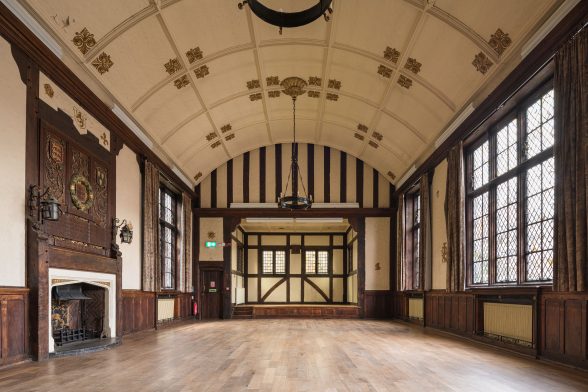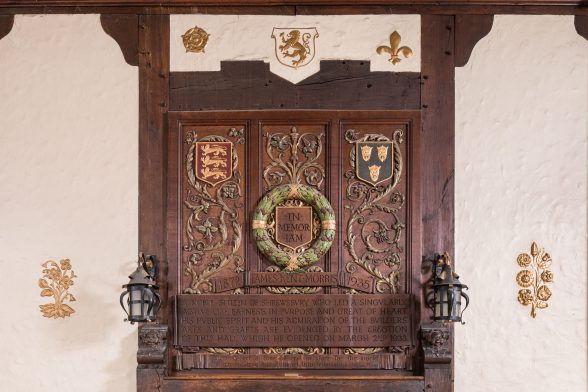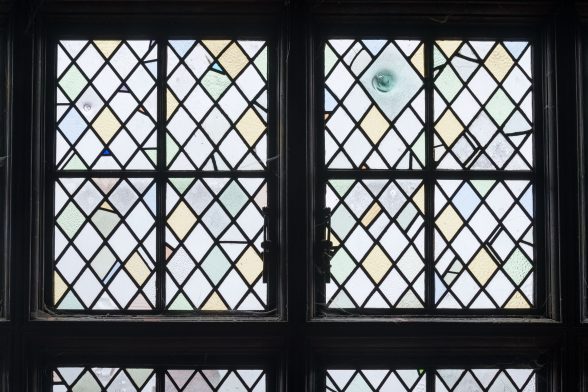This website uses cookies
This website uses cookies to enable it to function properly and to analyse how the website is used. Please click 'Close' to accept and continue using the website.



Image credit: Historic England
An early home of the Labour movement has just been Grade II listed, following an application by C20 Society and Shrewsbury Civic Society. The Morris Hall in Shrewsbury, Shropshire was built in 1932-1933 to designs by W J Harris, to host the growing Labour party membership in the town. The hall has remained in continuous use ever since, and become a popular venue for conferences, concerts, weddings, and community events.
Designed in an Arts & Crafts style, the hall has been recognised as a building of special national interest as a little-altered example of the historic English Revival architecture that was popular in the inter-war years. Its high-quality joinery and fixtures can still be seen today, and the craftsmanship reflects the values of its commissioner James Kent Morris, who was a prominent figure in the commercial and political life of Shrewsbury.
The Hall is in the process of changing hands for the first time in its history, having previously been owned and operated by a not-for-profit trust. In response to the potential threat this poses, the Society submitted a listing application in December 2023.

Image credit: Historic England
Glaciers and Politics
Morris Hall takes its name from James Kent Morris (1872-1935), a notable local socialist politician. Morris saw the need for a local meeting hall for the Labour Party, and in 1932 plans for the hall were drawn up by W.J. Harris of London, who is credited as the architect.
Opened by Morris on 2nd March 1933, the building was initially named Bellstone Hall, the name being taken from a boulder of volcanic rock thought to have been transported from Cumbria to Shrewsbury by a melting glacier during the last Ice Age. The stone can be seen in front of the steps leading up to the hall.
The construction was paid for entirely by Morris, but in 1934 he transferred the hall’s ownership to a trust which was set up to run the building on behalf of the Shrewsbury Labour Party. Morris died in January 1935, and in March 1936 a re-naming ceremony was held where the new name, ‘Morris Hall’ was declared by the former Labour Party leader George Lansbury.

Image credit: Historic England
Arts & Crafts
The hall was designed to appear as two attached sections – an older, medieval-looking hall to the north and a Tudor-style house to the south. This harking back to past English architectural styles was typical of the Arts and Crafts movement of the late 19th and early 20th centuries, a movement that was associated with socialism and prominent socialist figures including the poet and artist William Morris.
During construction, James Morris employed local craftsmen using traditional methods, ensuring the building was an embodiment of his personal political views on the value of skilled labour. It includes lovingly crafted oak joinery, handmade bricks, and hand-cut stonework. The interiors are timber-lined and decorated with plasterwork which is charmingly uneven in its application, intended to imitate traditional ways of working.
The building also illustrates the enduring influence of the ideas of William Morris and John Ruskin on British socialism, at a time in the interwar period when the Modernist movement was becoming highly influential on the political Left.

Image credit: Historic England
Comments
C20’s Head of Casework, Coco Whittaker, commented:
“The Society is truly delighted that Shrewsbury’s Morris Hall has been awarded Grade II listed status following our application. The beautiful 1930s Arts & Crafts hall was an important early home to the Labour movement, and has provided a fantastic venue and events space for the town for almost a century. We hope that listing will help to ensure that this historic building is conserved, and can continue to be at the centre of life in the town for generations to come”
Julia Buckley, MP for Shrewsbury added:
“Shrewsbury is of course abundantly rich in historical buildings – wonderful gems that reflect every period since Medieval times. Relatively speaking, the Morris Hall is something of a youngster, but it’s an exceptional building mirroring architectural styles of centuries gone by, created by the Arts and Craft designers of the time – and has its own story to tell. It’s a fascinating and beautiful place, and I’m thrilled it’s been listed.”

Image credit: Historic England

Become a C20 member today and help save our modern design heritage.